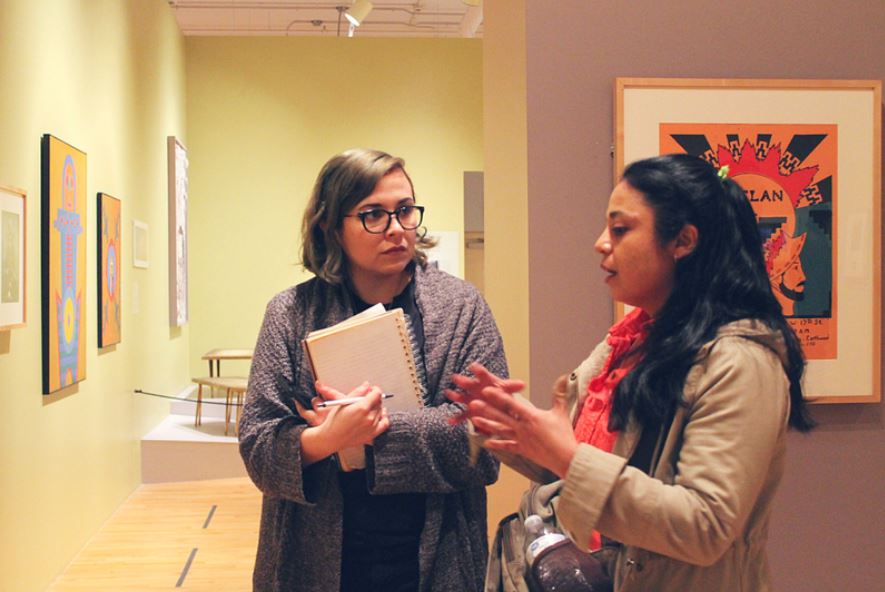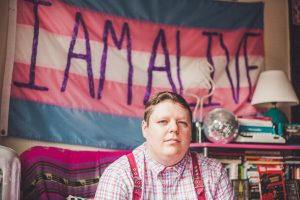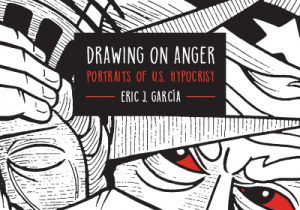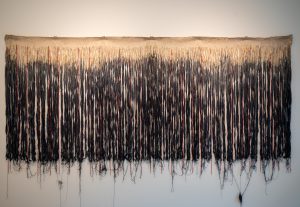Arte Diseño Xicágo, which is on display through August 19th at the National Museum of Mexican Art, traces our community’s art history in Chicago back to the World’s Columbian Exposition (1893) and up to the Civil Rights Movement. At a moment where we are being scapegoated nationally, targeted by white supremacist politicians, and pushed out by gentrification, this exhibition flexes a beautiful reminder that we have BEEN here. It can give solace to look back at the past and see our antepasados, those who have come before us, creating and dreaming of making the world a better place for those who come after, a sentiment we can draw strength from to do the same. I toured the exhibition with two artists from Mexican backgrounds, curious about what connections we would all see. In addition to feeling inspired by our history, we also all found ourselves questioning the role that the distinction between art and design has played historically in the marginalization of our art.
Those of us from marginalized communities find ourselves and our history in a constant state of erasure and in this context, seeing an exhibition that recognizes our contributions to the city’s art history dating back to the World’s Fair, for me, brought moments of healing. Seeing the sharp, determined lines of La Soldadera by Enrique Alférez felt like a moment of deep recognition — I looked at her and saw my grandmother. What a fierce, perfectly captured Mexican mother archetype, baby in arms in the front, carabina at the ready behind her. She’s so much like a Huasteca life-death figure. It was cast in the 1990s, but it speaks to the artist’s experience fighting with Pancho Villa in the Mexican Revolution before coming to study with Lorado Taft in Chicago. The show includes work from artists who traveled to or immigrated here from Mexico, artists who traveled to or found refuge in Mexico, and Mexican American artists who straddle the in-between. I found myself in awe of a piece called Another Mexican Baby by Archibald Motley, Jr., who traveled to Cuernavaca in the 1950s. It is a piece unexpectedly painted on a petate, a woven mat for sleeping, and my surprise at the material almost led me to miss that the baby referred to was in a casket as part of a funeral procession. The poverty associated with the material used as canvas elucidated a possible reason for the “another” in the piece’s title, but I was left wondering what was happening in Mexico at the time my own parents were babies. My family is from a tiny mountain town called Apaseo El Alto, known for its wooden and clay sculptures and I was surprised to find that one of the artists in the show, Luis M. Ortiz, was from there too. I had no idea I was walking in the footsteps of other Apaseoaltenses in Chicago! Luis M. Ortiz’s work in the show mainly consisted of portraits, the angular features and the texture created by the paint evoking those of faces created in wood and clay in Apaseo. The work of his son, Chicago Imagist Errol Ortiz, hangs in the next gallery, and the geometric shape of his figures’ features recalls both those of his father’s work and the artesanos Apaseoaltenses, with the added dimension of beautifully loud colors. There’s nothing I love more than brave colors standing out in the beige-loving Gringolandia.
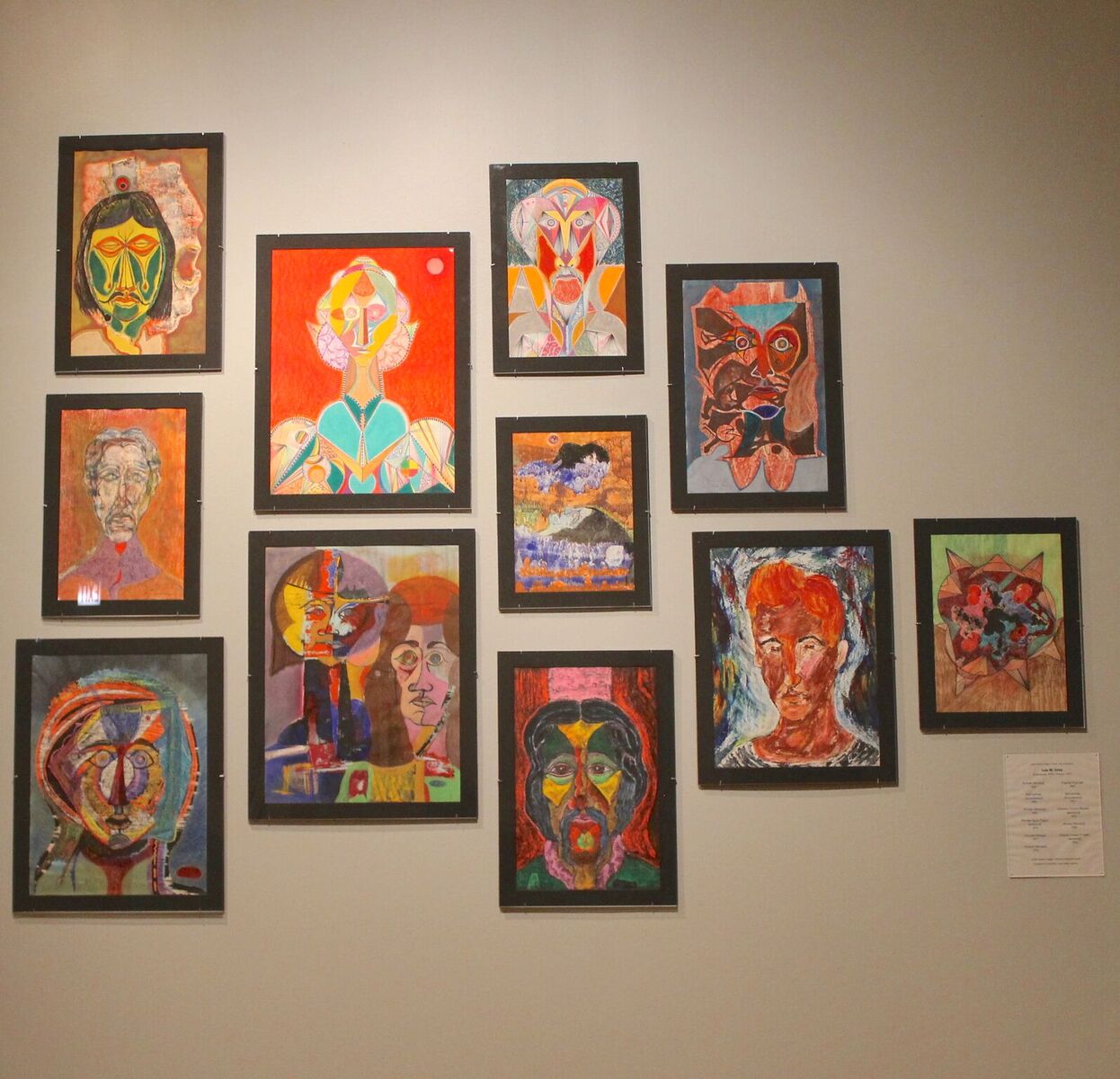
I was able to tour the exhibit with artists Carlos Orozco Ocaña and Norma Rios-Sierra. Carlos Orozco Ocaña is an indigenous artist and musician from Oaxaca. He and his family founded the artist collective Puech Ikots, whose name means “words of our people” in the Huave language, and which was formed to help other indigenous artists in Oaxaca who often lack government support, to promote and sell their artwork outside of their communities. Orozco Ocaña travels to Chicago to lead alebrije workshops through Cultura in Pilsen. Norma Rios-Sierra is a Chicago teaching artist who specializes in stained glass mosaics. She teaches workshops in schools and through her organization Mosaico Arte Chicago. She also recently became the President of the Board of Directors of Logan Square Neighborhood Association where she works on immigrants rights advocacy and issues related to gentrification. Her work will be part of the public exhibition Won’t You Be My Neighbor? through the WYBMN? Pilsen Community Art Project. As we walked through the galleries, both artists found themselves surprised by pieces they felt connected them to their history in an unexpected way. Moving through the exhibition, we talked about the need to remember our histories, the activist tradition of Mexican artists in Chicago, and in terms of arte and diseño, the tensions around the label “artesania.”
Orozco Ocaña says that he believes that “art is one of the principal bridges that can connect people internationally, whether or not we speak the languages of the world, it allows us to connect spiritually, through visual work that doesn’t require any languages.” He says he comes to Chicago to share a piece of Oaxaca’s culture in his alebrije workshops and to help attendees connect to their own creativity and to one another. In his work with Puech Ikots, he emphasizes that the goal of collaboration is important. “I try to pass on the concept that is important in my family that we can be inclusive, that rather than competing, we can collaborate between the different communities and support artists that maybe haven’t had the opportunity to study art formally, or perhaps those that don’t speak English, or those that have never left their communities.” The alebrijes of Oaxaca are different than those popularized by Pedro Linares in Mexico City, which are fantastical sculptures made from paper mache. Oaxacan alebrijes were popularized by Manuel Jiménez Ramírez, but Orozco Ocaña says they draw on a more ancestral tradition of carving from copal wood, which is often burned as incense in temezcales in Oaxaca. In line with the spiritual use of copal, Orozco Ocaña says that some of the most traditional themes for alebrijes in Oaxaca are the naguales. In Zapotec culture naguales are animal spirit guides you are born with that accompany you and help you throughout your life. He says that if someone has recurring dreams of jaguars, for example, the artists might make a specialized piece for that person. As an artist, Orozco Ocaña says that he prefers to conserve the traditional technique shown to him by the owners of the art, the indigenous people he learned from. He says he lets nature guide his sculptures and he loves to respect capricious materials and take advantage of their shape rather than fight them.
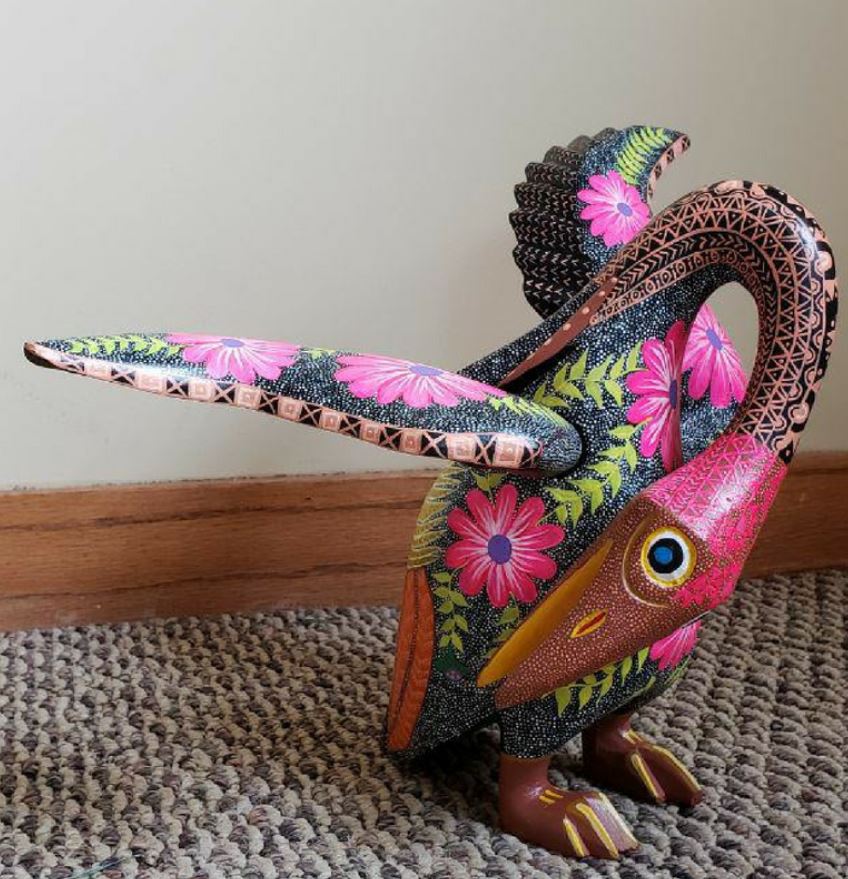
Orozco Ocaña says that he feels destiny or even the energy of the alebrijes brought him to Chicago, this “incredible sanctuary of immigrants, full of activism and people fighting for immigrant’s rights.” He continues, “There’s a bit of everything, but I have seen more here in favor of activism than against it. I think that’s why I feel comfortable in Chicago.” He says he feels a connection to the history and tradition of Mexican artists in the exhibition who have been drawn to Chicago’s activism. Standing in front of La Soldadera, he says that art can be medium for activism, where people can “remember and leave a mark of the indigenous people who have fought and struggled before, who perhaps others might not remember and who have passed on in battle or of old age.” Because of repression in Mexico, he says artists often have to have “a certain amount of secrecy or discretion with the contexts they give to their pieces, but they are often making declarations, shouting through their sculptures, through their paintings, and many other mediums.” He says he feels grateful to have an indigenous perspective on activism and to have the opportunity to come to Chicago and be able to teach all the things that he wants to teach and to have the space to say the things that are sometimes repressed in Mexico.
Orozco Ocaña says he was amazed to see Polish artist Morris Topchevsky’s painting Dance of the Feather which depicted dancers in Oaxaca. He said he was surprised to see Topchevsky, an artist who wasn’t from Oaxaca, appreciating and sharing Oaxacan culture. He told me about the dance that Topchevsky depicted. “We have a really big festival in Oaxaca called La Guelaguetza, and this dance comes from one of the eight regions that we have and in July they all get together. They all come with their food, our dances, las tehuanas, with the embroidered dresses of the isthmus. I’m from the isthmus. Historically, the festival was for the pueblos, well, now it’s something touristic where the government sells tickets. Historically, it was something internal to share everything we have with our own indigenous communities. Now we have the opportunity to share it with the world, but that was its origin… I would say it’s one the few opportunities that people have to see all eight regions at once, how we speak, our food, everything. Otherwise, you have to travel the whole state and not even those of us from Oaxaca have seen all eight regions.”
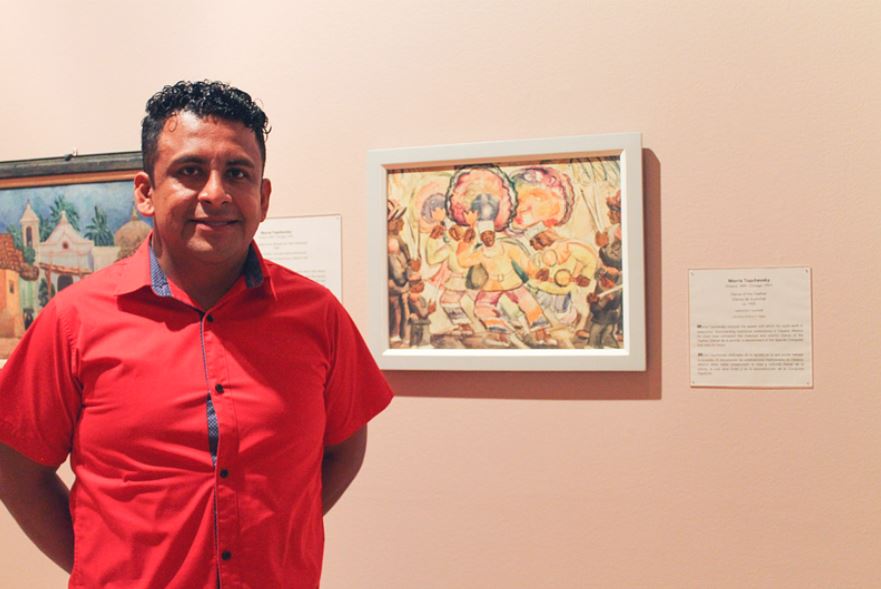
I asked how he felt about artists going to Mexico’s indigenous communities for inspiration. He said that he felt the most important thing was for artists who were internationally renowned to acknowledge when their work has been inspired by indigenous people around the world, not just in Mexico. He says that there is a respectful way to do it, as in Topchevsky’s painting, that gives acknowledgment and space to what has inspired you and that he welcomes this. “When they go and copy the designs, copy from museums and galleries, but more so when they go to Monte Albán, to Mitla, they take many Zapotec designs with a Zapotec significance and put them on different products, shoes, jeans, whatever else, but they don’t acknowledge their origin … when they don’t give credit, when they say it’s a personal invention or their own work, that’s when there’s a problem.” The piece that Orozco Ocaña said he liked the most was Astronaut Targets by Errol Ortiz. He saw similarities between the piece and the way that he and the other artists he works with use bright colors in their sculptures. “The combination of colors, for example in this painting that we are looking at [Astronaut Targets], it’s a high impact, penetrating red-orange. It’s not a pure orange, it’s a mix and we do that too in our indigenous communities. The artists I work with sometimes can’t afford a lot of paint and it amazes me how they have shown me to mix colors made from nature. They are really strong.” He says he finds inspiration for his own use of color from the flowers that come from Oaxaca’s eight regions and the ocean.
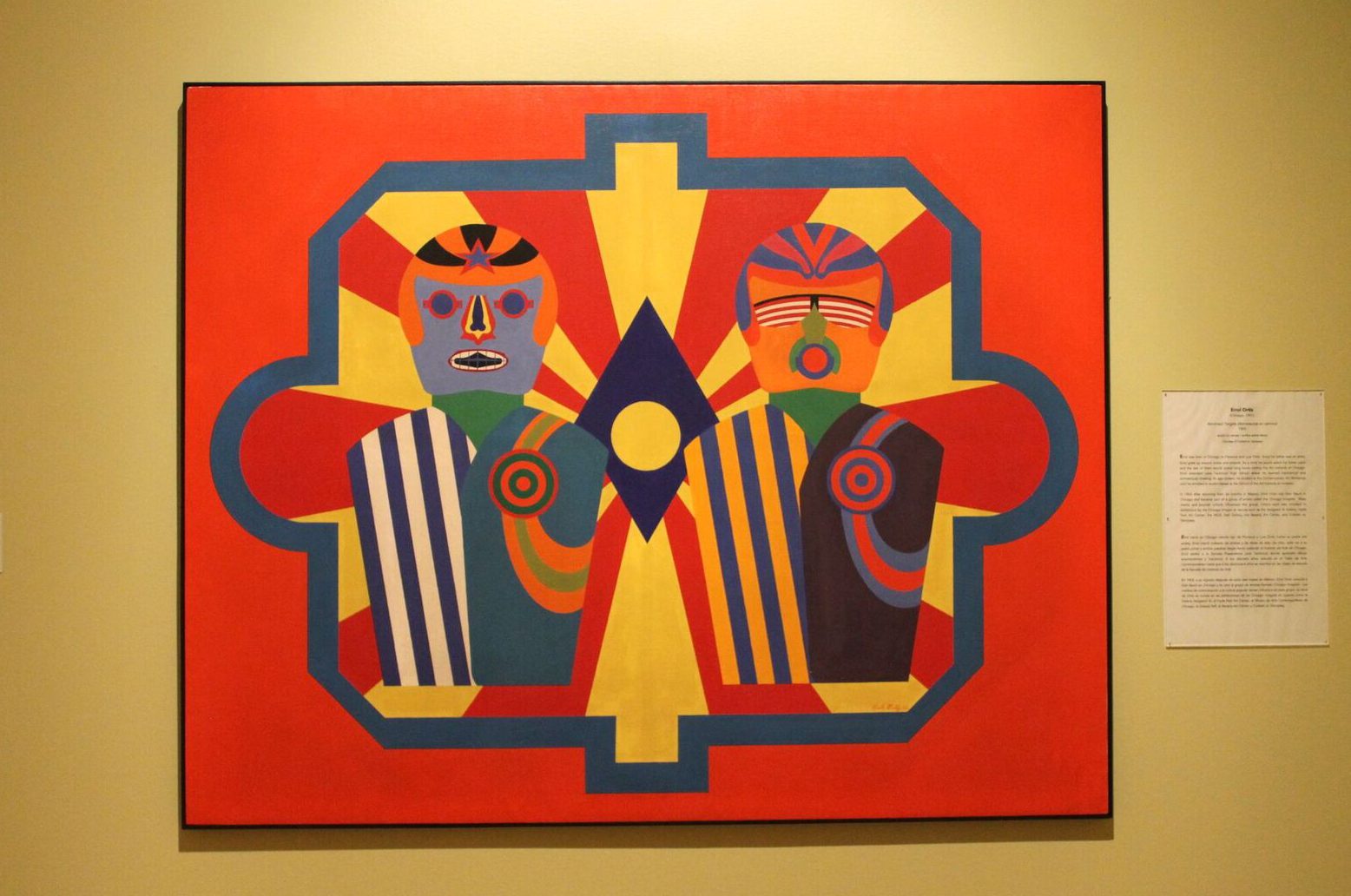
Rios-Sierra grew up in Chicago in the Bucktown, Wicker Park, and Logan Square neighborhoods. She said she felt a connection to the legacy of resistance among Mexican artists in Chicago. Her family is from a little town in Guanajuato called La Cañada de Caracheo. She says Guanajuato is where “the revolution really first sparked and got its fire. And I know that my great grandpa has pictures with Pancho Villa and they’re in a museum somewhere in the university. We have a really strong connection there and my family was a part of the revolution. I think it really empowers me a lot because I feel like we’ve always been fighters. We’ve always been loud, ready to stand up for what we believe in. It feels like the work that I am doing now stems from that. It fuels me to know that’s where I come from. I carry that lineage with me and that resiliency.” She is involved with Logan Square Neighborhood Association’s immigration committee and says they are working on is a streetscape beautification plan for Hermosa. She says that this is because research has shown that most of the people who have been displaced from Logan Square — 20,000 Latinos in the past five years — have moved west to Hermosa, and so in order to reach the immigrant community, they are having to go outside of Logan Square. The beautification plan will include permanent visual elements that “will remind people about the value immigrants bring, that THEY bring… It’s like we have to remind each other that we are valuable and we are worth it. Even though our system is broken, we are worth the fight for each other and for our children and so we’re incorporating mosaics into the project.”
She says she thinks of her work with mosaics as mirroring her community work. “I think of it like this way of taking on these broken pieces, piecing them back together on our own terms and creating something that we’re proud to display. We’re living in these broken communities. We have so many things that are attacking us from all angles. Underfunded schools, displacement, immigration, and you know there’s a lack of resources throughout, you know we don’t have any mental health centers. There are so many things that we are being bombarded with that I feel art is the answer a lot of times. You know, like we need a visual reminder. People don’t have time to read. Don’t have time to go to meetings. Ok. You’re going to drive down the block every day and you’re going to see that butterfly every day, and that’s going to remind you every day that you are a person of value. I mean, I hope that it is.” In her work as a teaching artist, she said that in addition to mosaic classes, she also teaches piñata and sugar skull classes, mostly because of her son. “I really want to keep our cultural life and keep him in the mix somehow… I feel like these things are like novelty items right now. You see calaveras everywhere, everybody loves piñatas and tacos and conchas and all these Mexican things but they don’t know where they come from… so I’ve taken on that burden to be able to share with other people my culture. Even though it is being totally commodified on every level at least I can share this information with people and they can know a little bit more about what they’re purchasing.”
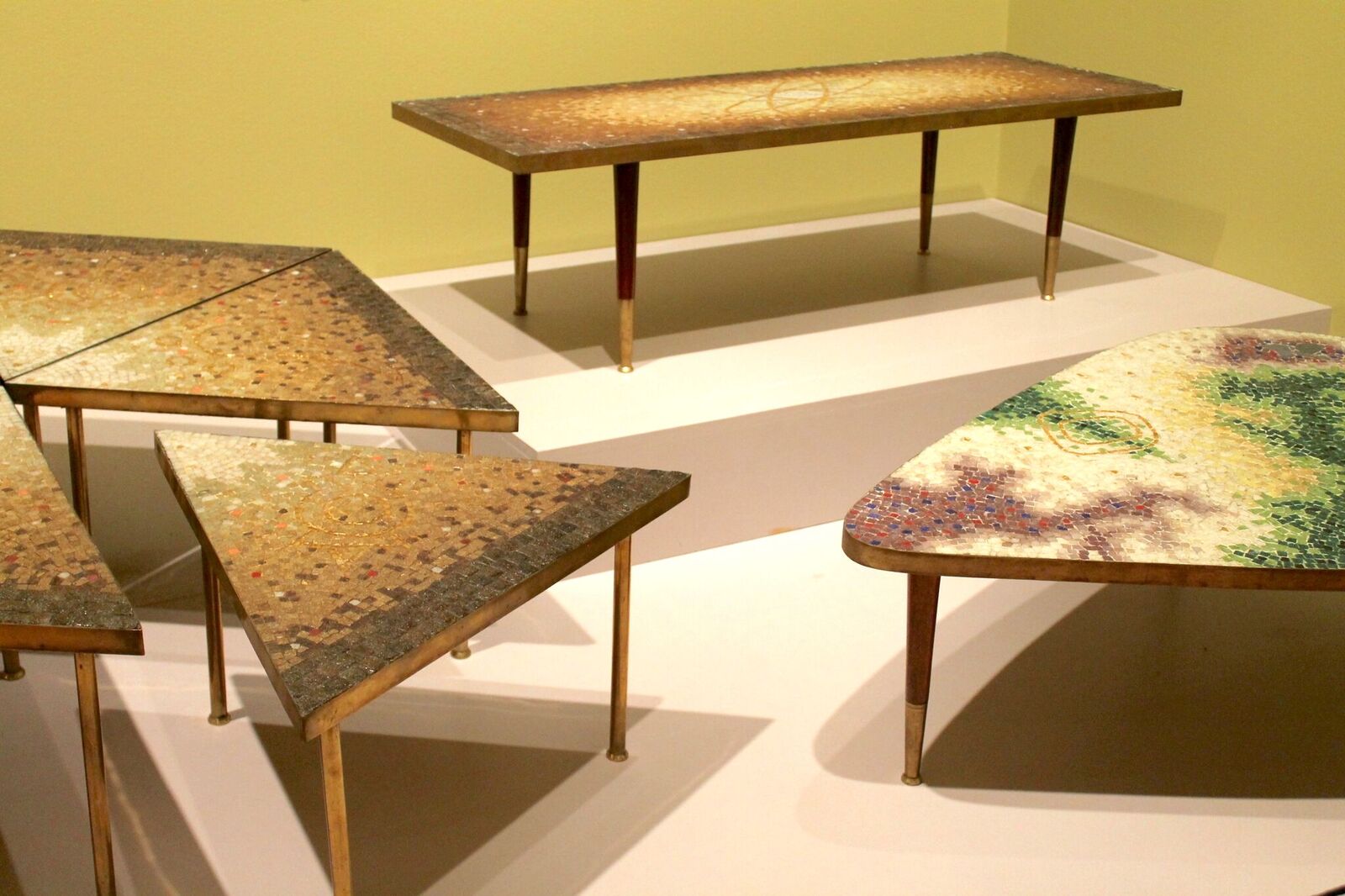
Rios-Sierra said that in the exhibition, she really loved seeing the work of Mexican relief artist and sculptor Enrique Alférez. “It would just have meant so much to me to know that Mexicans had been a part of this work. You know? I mean I can’t walk through downtown without talking about these buildings and the story behind them and just to know that so much of who we are is still in this work, the doors and the inspiration behind them. It just hurt me a little bit to know that it took me this long to find out, to see these stories and to see how many people are Mexican and have contributed to work here in Chicago, work that I think for me would have been a shining light in my education, which was so Eurocentric.” As someone who had spent many Christmases at the Settlement House, she also appreciated seeing it as part of the exhibition. The artist she said most connected with was mosaic artist Genaro Álvarez, whose works in the show includes beautiful mosaic covered tables. “I love his work, his little abstract bits and pieces. It’s nothing like I would ever make. And it’s very Eurocentric in design. But I mean, he’s Mexican,” she said with affection. For Rios-Sierra, the representation that the show afforded her was really important. “You know I think you always have in the back of your mind, like, ‘I should just get a real job.’ But when you see such accomplished work that is now historic, I think that makes my dreams more concrete… We need to know that there have been people before us. There will be more coming. I think it makes my heart grow a little bit that these people have been around this whole time. We just didn’t know it.”

Rios-Sierra said that she has had issues with people not recognizing her work as a mosaic artist as “real” art. When applying for a residency she was once told that her work was too functional. This question of what constitutes “real art” and who gets to decide is something that came up for all three of us, a question that may only have been possible because the scope of the show was broad enough to include both art and design. Would “artesania” have been included in an art exhibition otherwise? If it would be at the NMMA, would it be included in other institutions? What happens when something is labeled “artesania” or “craft” or “design”? There were photographs of ceramic artists working taken by another artist in the show and I wondered about the impact of the way institutions may treat mediums. It seems much more likely that on average, I would see a painting or a photo of a ceramic piece made by Mexican artists/artesanos than that I would see the piece they made on display. Rios-Sierra says that distinctions between art and design don’t necessarily exist “where we come from. Our art is what we wear, what we use. It’s not just decoration [without function]. It’s a part of our lives.” Orozco Ocaña also disagrees with the term “artesania.” “I don’t like it much,” he said. “I say it’s art, what they [the indigenous artists he works with] are doing, really and truly.” He says he thinks the terms we use are really important and he likens the effects of taking away the terms used by people who create something to the way the Mexican government is trying to take away the term “mezcal” from mezcaleros in Oaxaca who can’t afford to pay taxes or who don’t work with haciendas. Instead, the government is trying to make those from communities who invented mezcal use the term “comil,” as though it were of lesser quality. He says this is something that happens in all artistic activities in Oaxaca.
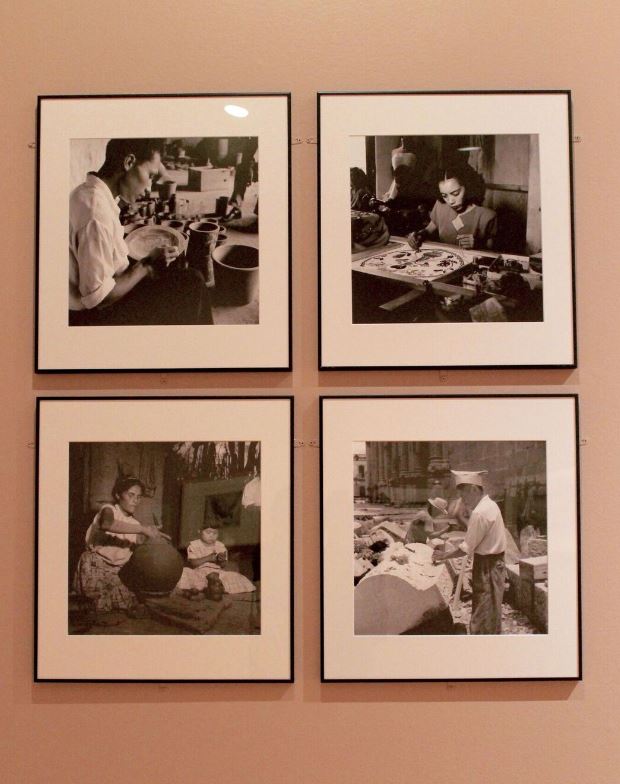
Rios-Sierra said that she also sees the distinction between “art” and “artesania” play a role in gentrification. “I know so many artesanos and artesanas in Pilsen and everyone’s got their eyes on Pilsen right now. I think what happens first is you have the artesanos coming and doing their vending, the grassroots kind of artists, the street artist, right? And then the neighborhood is fully gentrified and if you do see any art in the neighborhood, because I don’t see art as a part of most gentrified neighborhoods, … it’s these high-end exclusive art galleries that have art for art’s sake instead of cute earrings, and prints, and shirts and stuff like that.” She said those things are valuable because they sell more easily and are better able to support artists than the type of work she says may hang in galleries for months without selling. Being able to make art that doesn’t multitask, whether that be to encourage political organizing, to pass on traditions and culture, or even just for everyday use, is a luxury not all of us have, especially in communities that face marginalization, disinvestment, immigration raids, and gentrification. The art we make, art married to design, art with a purpose, is art that isn’t always welcome, especially when political. It may be accepted in retrospect, as with the Civil Rights era posters, rendered safe with the distance of time, or accepted only as long as critiques lack specificity and therefore usefulness, as in the case of a piece in another NMMA exhibition, Peeling off the Grey, where artists from Pilsen Alliance were asked by the museum to remove references in their piece on gentrification to Ald. Danny Solis and The Resurrection Project. Function often seems the like the line institutions draw between what is accepted as art and it is important that question how exactly that line itself functions and for whom.
Seeing an exhibition of the art and design of Mexicans in Chicago provided us with a historical perspective we had long been looking for, but were having a difficult time finding. In this sense, it matters that for Mexican artists and art lovers, “art” includes everything that institutions might try to parse out into either “art” or “design.” It matters because we’re the ones searching and the language used by institutions doesn’t necessarily reflect the terms we use to look for it. For me, one thing this eye-opening exhibition shows is that, in the interest of increasing representation of artists from marginalized communities, even within marginalized communities, institutions should be more open to including what those communities themselves consider “art,” even if they feel it should belong to other categories, such as “design” or “artesania.” While we wait for the art world’s terminology to de-Westernize itself, I hope more institutions will begin to explore art and design in tandem as a way to increase inclusion.
This article is presented in collaboration with Art Design Chicago, an initiative of the Terra Foundation for American Art exploring Chicago’s art and design legacy through more than 30 exhibitions, as well as hundreds of talks, tours and special events in 2018. www.ArtDesignChicago.org.
Featured image: Norma Rios-Sierra gestures with her hands as she talks to writer Jennifer Patiño Cervantes about the beautification project in Hermosa she is working on, while standing in the section of the exhibition on the arts organizing of the Civil Rights Era. A poster for Casa Aztlan can be seen behind them. Photo by Melissa Patiño Cervantes.
 Jennifer Patiño Cervantes was born on the Southwest Side of Chicago with roots in Mexico. She is a freelance writer, poet, essayist, and Director of Operations + Archives for Sixty Inches From Center. She graduated from Columbia College with a degree in Art History and double minors in Poetry and Latino/Hispanic Studies. She is currently pursuing her MLIS at the University of Illinois at Urbana-Champaign.
Jennifer Patiño Cervantes was born on the Southwest Side of Chicago with roots in Mexico. She is a freelance writer, poet, essayist, and Director of Operations + Archives for Sixty Inches From Center. She graduated from Columbia College with a degree in Art History and double minors in Poetry and Latino/Hispanic Studies. She is currently pursuing her MLIS at the University of Illinois at Urbana-Champaign.
